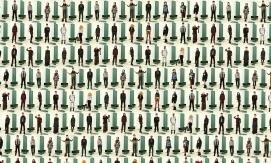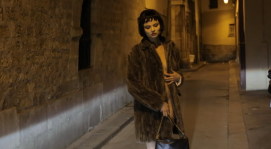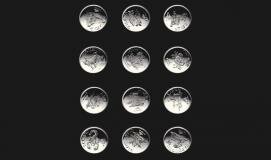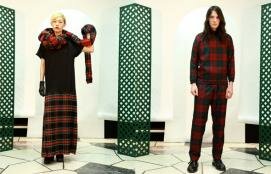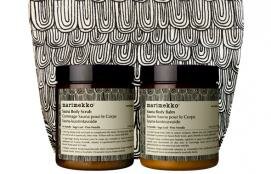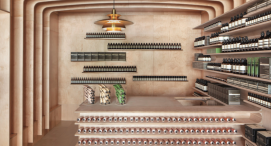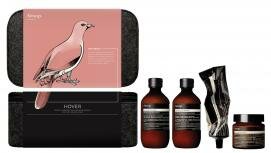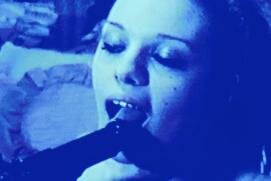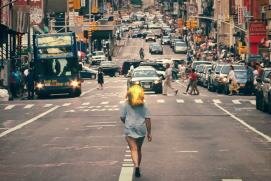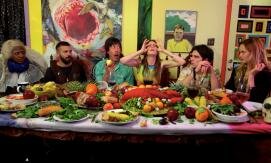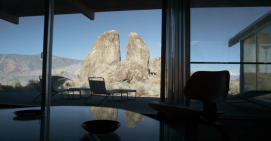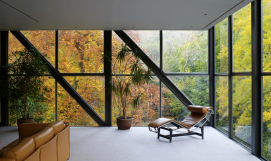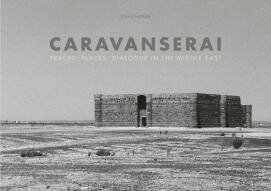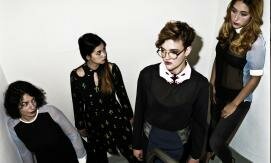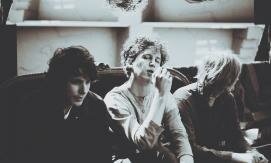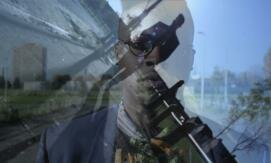- 1
- 2
- next ›
- last »
Imaginary View is the first exhibition of large-scale photographs and accompanying sculpture by Dan Tobin Smith and Rachel Thomas, featuring scenes of massive stage sets crafted from polystyrene, assembled and shot on 5 x 4mm black and white film in various studios around London. One such set features an 8 x 8m 'lake' of milk, in which is reflected the fantastical geometry of a ruined island city.
POST NEW caught up with designer and art director Thomas, whose client commissions include: Hermès, Mulberry, British Vogue, and Grafik magazine, while preparing for opening night at London's Somerset House.
Mandi Lennard: How did you and Dan meet?
Rachel Thomas: We were commissioned separately by James Greenhow and Tom Skip from Peter Saville Studio to work on some sleeves for a band called The Music. We got on really well, so when I next needed a still life photographer to work with on a commission for a Big Active book, it made sense to collaborate with him again.
ML: How involved were you in the composition of the photographs?
RT: Most of the images were composed firstly as drawings, and then once made, taken into the studio and lit. There are a few - the ones where it is more of a selection of independent objects arranged on the ground - that were looser and came together in the studio, but on the whole the final images are close to the drawings in terms of composition. Lighting plays a huge part in creating the mood and texture of the sets and that all happens in camera.
ML: How does the collaboration work? How does it affect, enhance, and alter your work, to collaborate in this way?
RT: I'm not a photographer, but I think in terms of photographic imagery. So I need to collaborate to make it work. Be it a set designer, art director or photographer, everyone brings different things to the table, so you have to find a way to combine and share their way of seeing the project. Sometimes, particularly at the outset, it's hard to know how to handle this dynamic. The excitement is creating something neither of you could achieve single-handedly.
ML: Are you a fantasist?
RT: Well that is the world I inhabit as an image-maker. I am not interested in reproducing reality. I prefer to create something that doesn't exist as a logical or representational scene or object in the world. It's more about bringing shapes, colour and recognisable objects together in an unexpected or new way, as well as using the familiar to root the set somewhere within people's understanding of a place or atmosphere. I'm a sucker for fake, make believe, fabricated worlds.
ML: How much pre-discussion was there before you knew you were going to have an exhibition?
RT: We always knew we would like to show this work in a different way rather than just having them to show in our portfolios. We spent quite a bit of time creating the work without a client of any kind involved and we felt we needed to create a different space for it. This was also because we wanted to print the images on a large scale in a very particular way, so that the tonal quality and scale of the sets could really sing. We have also published the project in the current issue of a very beautiful print magazine called PIN-UP, where it also features on the cover. It means we get it into the hands of an audience that isn't online or in a gallery, so it's somewhere in the middle, and we have it all covered which is amazing.
ML: Can you give me a brief sketch of your working history together?
RT: Following the early projects, we just found that we were being commissioned on campaigns together, perfect as we have a great synergy.
ML: Is the subject matter something true to your heart at this time, as opposed to commercial projects you usually undertake?
RT: It's very different because you have to invent everything; there are no parameters. I like to have parameters in the form of a brief, as it gives you a starting point, but it's also great to invent something from scratch.
ML: Take me through some of the technical aspects of the work/collaboration?
RT: Dan takes care of all the photographic technicalities, like lighting, film types, studio dimensions, perspective, capturing the image in the most beautiful way, and then he takes care of the post production. I oversee the drawings and specs, instructing my suppliers to realise the designs. I work with some really talented people who also add a lot in terms of problem solving, transforming our thoughts and ideas into a real object.
ML: I'm familiar with the vibrant pop art areas of your work; is it a departure to create this poignant, delicate, black and white body of new work?
RT: We have always wanted to shoot something in black and white. Dan always shot black and white Polaroids, and very often we liked them as much as the final colour images, which is why we came to shoot in black and white this time. It wasn't a conscious thing; just something we were both interested in exploring. So many of the films and photography I grew up loving and being influenced by, are black and white, including Hollywood musicals that used a lot of fantastical sets.
ML: And the materials; how do these differ to what you usually work with?
RT: I've done a lot of work with polystyrene, so I'm already very familiar with what it is capable of and how it looks when it's lit and shot.
ML: You mention extensive experimentation with aerial perspective, with light bouncing off smoke particles in the air; how do you feel the resulting images compare to what you had expected?
RT: This was about creating atmosphere and making the imagery more mysterious and less real. It's about disguising the edges a bit, so there is less of a concrete idea of a set in a studio. It could be inside or outside the space, or even continuing forever, so there is a life beyond the frame.
ML: Somerset House is a pretty prestigious location; how did this come about as your venue?
RT: I took some time out last year to concentrate on personal work. This was when I showed the project to a few key people. I had really admired the programme at Somerset House and felt that Claire Catterall (the curator there) would be a really great person to show it to. She loved it and offered us a show. It's the perfect venue in terms of the grandeur of the architecture and the fact it's a public space that provides a platform for fashion and photography, and graphic design as opposed to fine art.
ML: Where do you find you take most inspiration from in your work in general?
RT: A lot from the past, films, illustration, furniture, ceramics, fabric prints, sculpture and installation, everyday objects, pound shops, fun fairs, theme parks, toys...
ML: How do you feel your work has developed or changed over the years?
RT: I know more about materials and process, and the practicalities of how to get something done. I also understand that inspiration comes from doing stuff. The more you produce, the more ideas you generate. Sometimes you get lucky and the perfect idea comes to you fully formed, but a lot of the time you just need to put the work in.
ML: Are there any other projects coming up/plans for this year?
RT: I am working with Anya Hindmarch on her show for London Fashion Week next month, and I should mention that I just relaunched my website! I also have a beautiful baby boy who is just six months old, so I'll be taking extra special care of him.
Imaginary View runs until 9 February 2013.
Mandi Lennard

end










